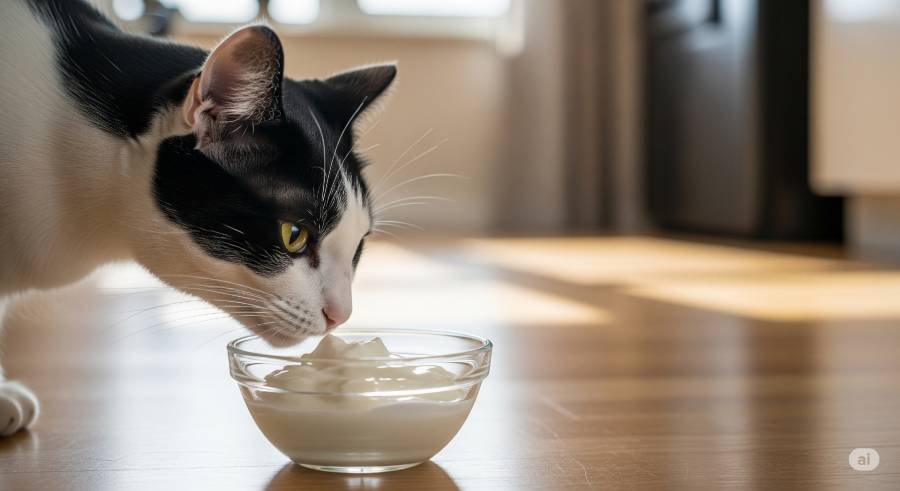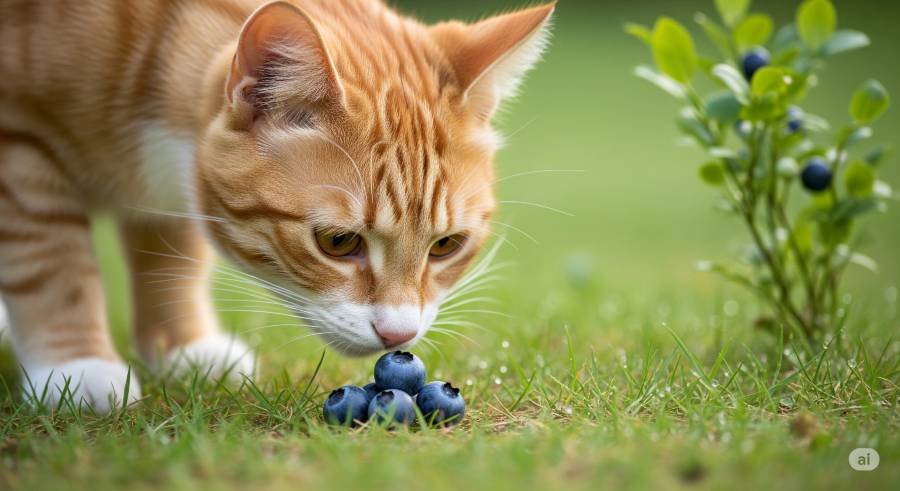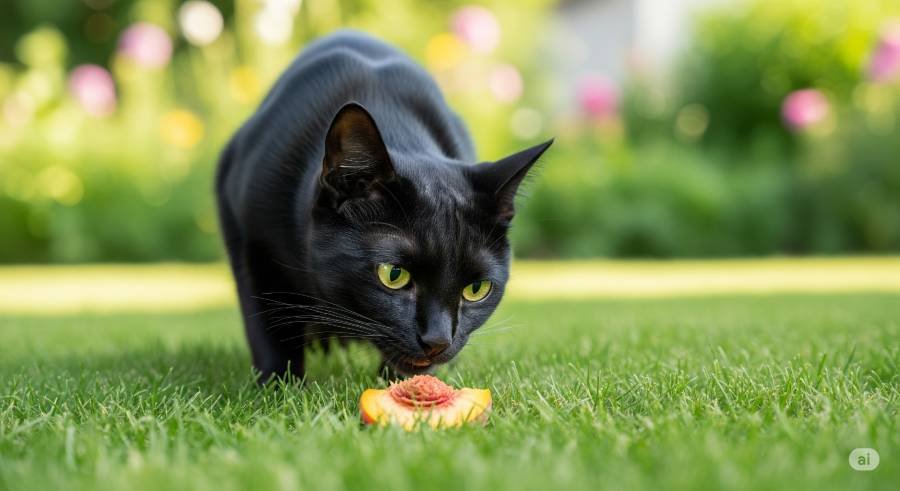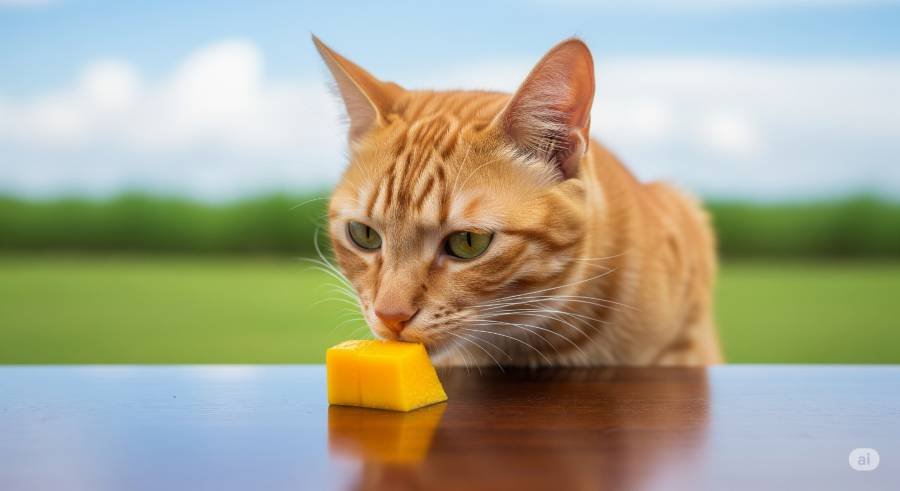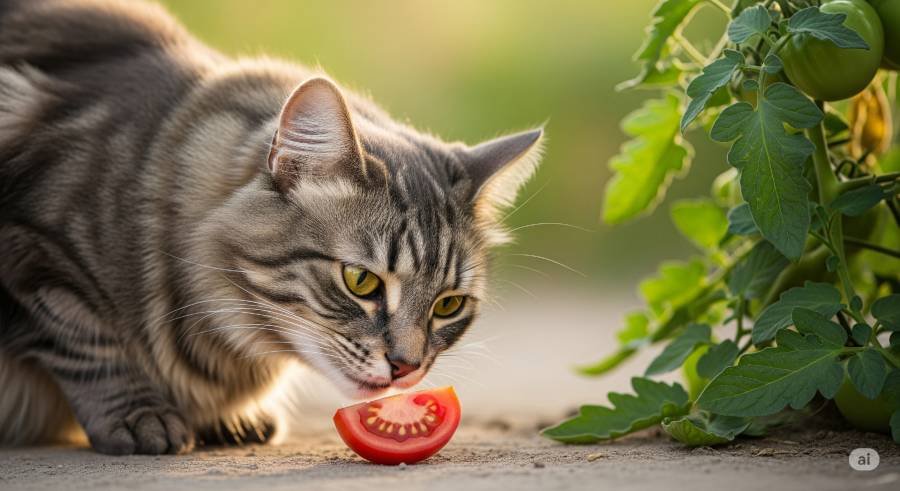Yes, cats can eat pumpkin, particularly plain, cooked pumpkin puree. Pumpkin is safe for cats and can offer several digestive benefits when given in small amounts, making it a popular natural remedy for certain feline gastrointestinal issues.
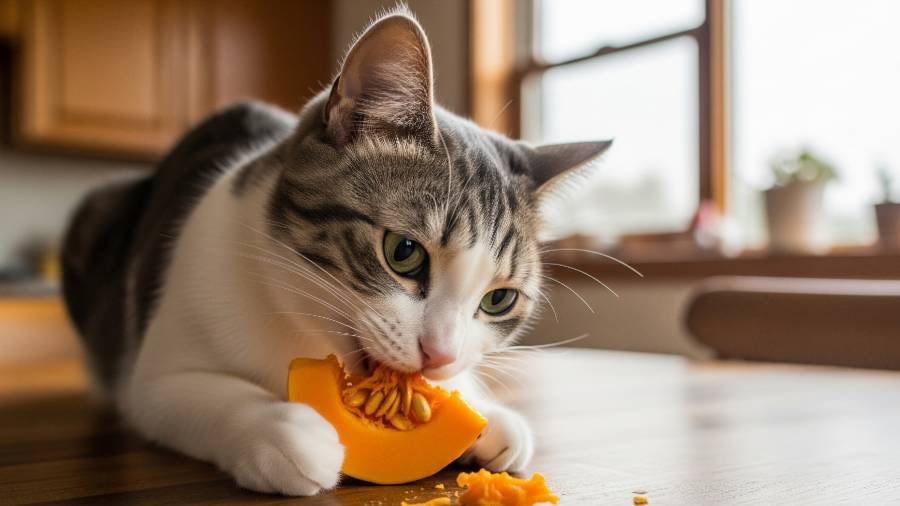
Nutritional Profile of Pumpkin
Pumpkin is a nutrient-dense food, rich in vitamins, minerals, and dietary fiber. It contains Vitamin A (from beta-carotene), Vitamin C, Vitamin E, and important minerals like potassium and iron. Its most notable component, however, is its high fiber content.
While cats are obligate carnivores whose primary diet should be meat-based, certain plant-based additions like pumpkin can be beneficial due to their specific properties.
Benefits of Pumpkin for Cats
The benefits of pumpkin for cats primarily stem from its unique fiber composition. This makes plain pumpkin a valuable addition for specific health concerns.
- Digestive Health: The fiber in pumpkin is a powerful tool for regulating a cat’s digestive system. It can help with both diarrhea and constipation. For diarrhea, the soluble fiber absorbs excess water, helping to firm up stool. For constipation, the fiber adds bulk to the stool, stimulating bowel movements. A small amount of pumpkin can often soothe an upset stomach.
- Weight Management: The high fiber content in pumpkin helps cats feel full, even with fewer calories. This can be particularly useful for cats on a weight loss regimen, as it allows them to eat pumpkin without adding excessive calories to their cat’s diet. It helps reduce overall calorie intake.
- Hairball Prevention: The added fiber can assist in the passage of hair through the digestive tract. This may help prevent or reduce the frequency of hairballs. Regular feeding of pumpkin can act as a gentle, natural lubricant and bulking agent.
- Source of Vitamins and Minerals: While cats get most essential nutrients from their complete cat food, pumpkin provides a modest boost of beneficial vitamins like Vitamin A (from beta-carotene) and antioxidants, which support overall health and the immune system.
How to Safely Feed Pumpkin to Your Cat
Proper preparation and portion control are crucial when feeding pumpkin to your cat to ensure it remains safe for cats.
- Use Plain Pumpkin Puree: The safest way to feed pumpkin to your cat is to use plain pumpkin puree. This means 100% pure pumpkin, with no added sugars, spices, salt, or other ingredients. Avoid pumpkin pie filling at all costs, as it contains sugar, spices (like nutmeg, which is toxic to cats), and other additives that are harmful to your cat.
- Cooked Pumpkin: While some raw pumpkin might not be immediately toxic, it is generally much harder for a cat’s digestive system to break down. Stick to cooked pumpkin. Canned pumpkin puree is already cooked and convenient.
- No Pumpkin Seeds or Skin: Do not feed your cat pumpkin seeds or raw pumpkin skin. Pumpkin seeds, while sometimes roasted and given to humans, can be a choking hazard for cats and are generally not recommended due to their fat content. The skin is tough and indigestible.
- Small Amounts: Always start with a very small amount. For adult cats, typically 1/2 to 1 teaspoon once or twice a day is sufficient. For smaller cats or kittens, even less. Overfeeding can lead to excessive fiber intake, which might cause digestive upset rather than alleviate it.
- Mix with Food: Many cats won’t eat plain pumpkin on its own due to its mild flavor and unusual texture. Mixing a small amount of pumpkin puree into their wet cat food can make it more palatable.
- Introduce Gradually: Introduce pumpkin to your cat’s diet slowly. Observe them for any adverse reactions like increased vomiting, diarrhea, or constipation. If their condition worsens, stop feeding pumpkin and consult your vet.
When Pumpkin is Not Recommended
While plain pumpkin is generally beneficial, there are specific scenarios to avoid:
- Pumpkin Pie Filling: This is explicitly toxic to cats due to added sugars, spices like nutmeg, and other ingredients that are not safe for cats. Never give your cat pumpkin pie filling.
- Raw Pumpkin: As mentioned, raw pumpkin is tough and hard to digest. It could also pose a choking hazard if given in larger chunks.
- Excessive Amounts: More is not always better. Feeding pumpkin in large quantities can disrupt your cat’s nutrient absorption and lead to severe digestive issues, including nutrient malabsorption. The high fiber content can become counterproductive.
- Cats with Specific Conditions: If your cat has an underlying medical condition, especially related to the pancreas or liver, consult your veterinarian before adding pumpkin to your cat’s diet.
Pumpkin as a Supplement, Not a Meal
It’s crucial to understand that pumpkin should only be used as a dietary supplement or a temporary aid for specific digestive issues. It is not a complete and balanced food for cats.
Your cat’s diet should primarily consist of high-quality commercial cat food formulated to meet all their nutritional needs as obligate carnivores.
For a broader understanding of what other human foods can be safe for your feline companion, you might want to explore resources on what human food can cats eat.
If you’re considering other vegetables, you can also look into whether can cats eat vegetables is generally recommended. For instance, while carrots also offer fiber, their suitability might differ, as discussed in can cats eat carrots.
Consulting Your Veterinarian
Before introducing pumpkin or any new food into your cat’s diet, especially if they are experiencing digestive issues or other health problems, always consult with your veterinarian.
They can accurately diagnose the issue and provide personalized recommendations for feeding pumpkin or other dietary adjustments. This professional guidance ensures the best approach for your feline friend’s health. They can advise on the correct dosage and frequency of feeding pumpkin to your cat for specific ailments.
So, can cats eat pumpkin? Yes, plain, cooked pumpkin puree is safe for cats and can be a beneficial natural supplement for digestive issues like diarrhea and constipation due to its high fiber content. It can also aid in hairball prevention and offer some support for weight loss.
Always ensure you are feeding pumpkin puree that is plain, with no additives. Avoid raw pumpkin, pumpkin seeds, and especially pumpkin pie filling. Feed only a small amount, typically 1/2 to 1 teaspoon, mixed with their regular food.
Remember that pumpkin is a supplement, not a meal, and your cat’s primary nutrition should come from a high-quality cat food.
Always consult your veterinarian for advice on feeding your cat and managing any health concerns.
